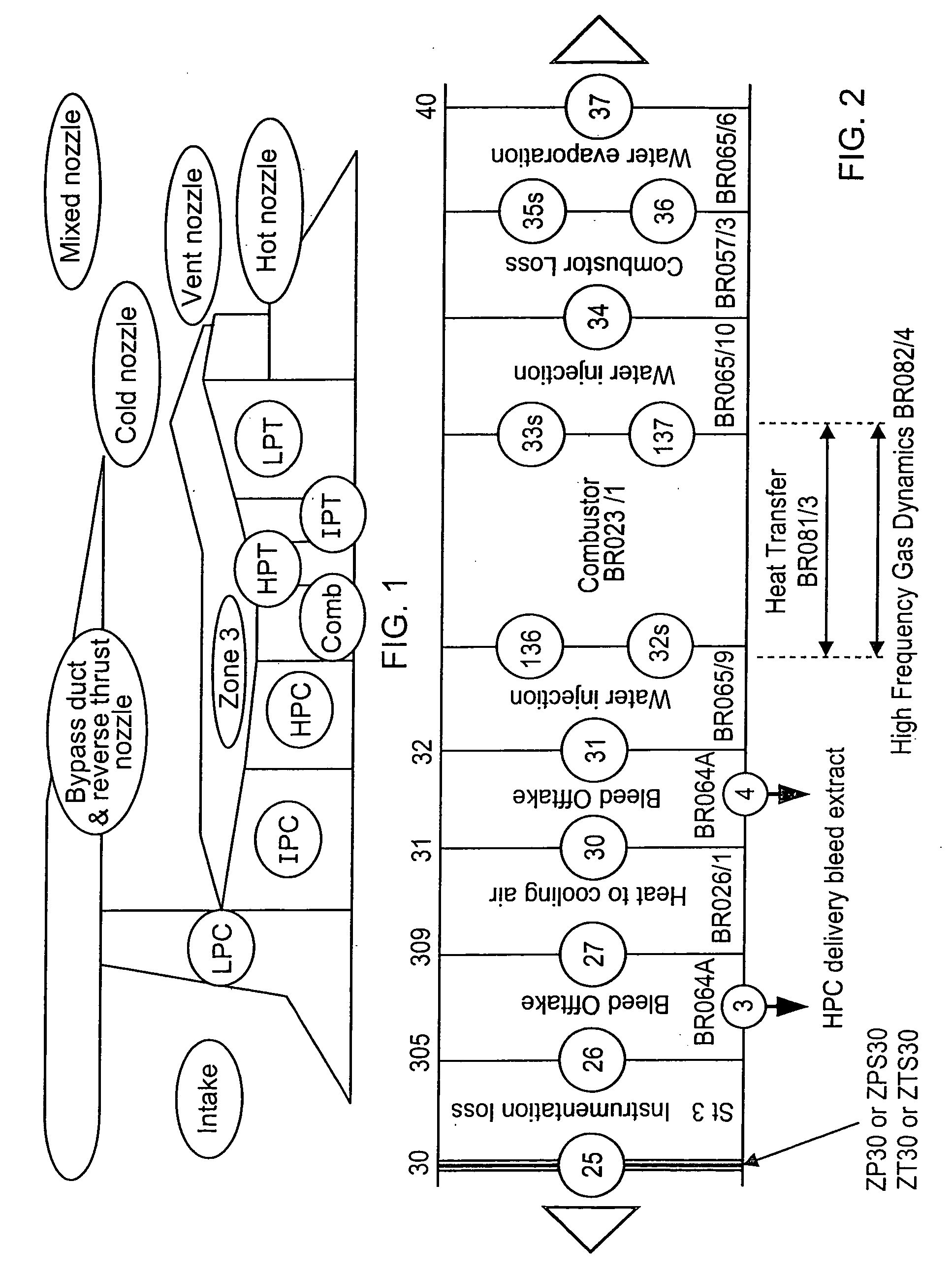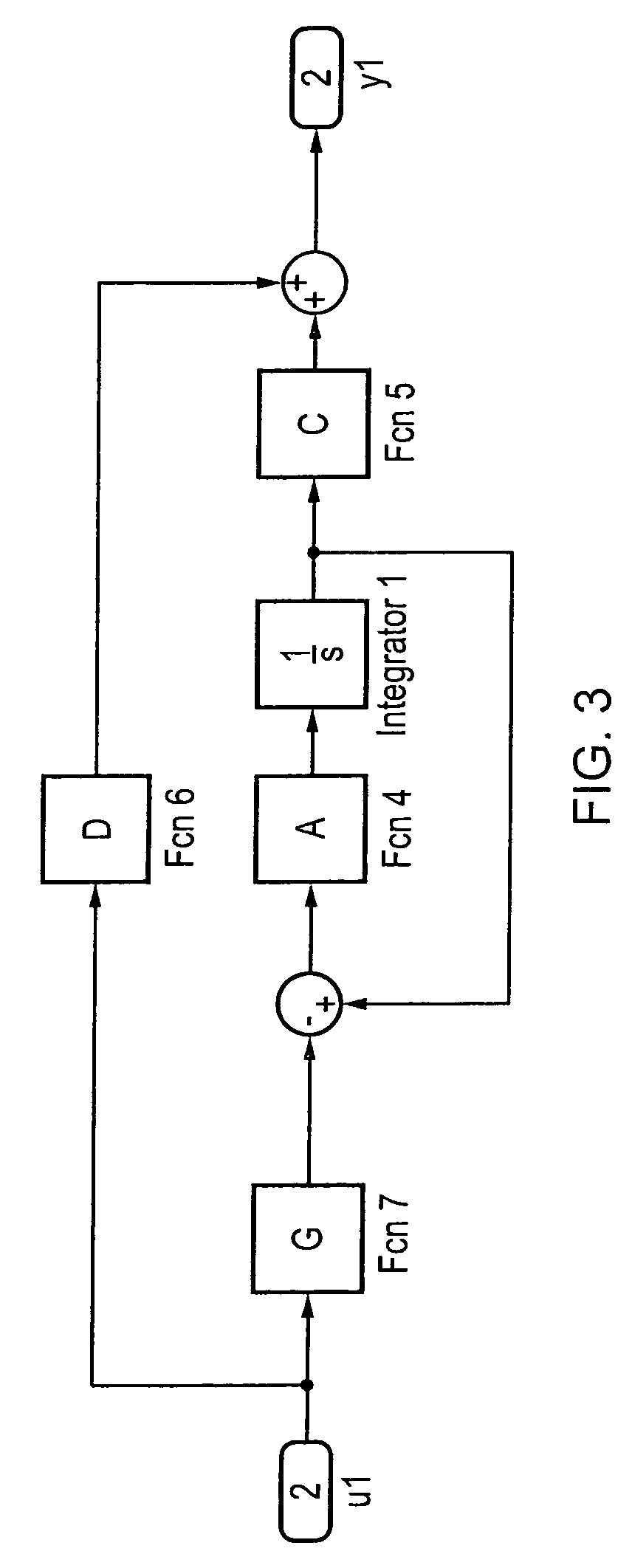Engine performance model
a technology of engine performance and model, applied in the field of engine performance models, can solve the problems of high complexity of modern gas turbine engines, and large number of iterative calculations, and achieve the effect of improving the accuracy of piecewise linear engine performance models
- Summary
- Abstract
- Description
- Claims
- Application Information
AI Technical Summary
Benefits of technology
Problems solved by technology
Method used
Image
Examples
Embodiment Construction
[0106]Non-Linear Engine Performance Model
[0107]FIG. 1 shows a schematic diagram of the structure for a Rolls-Royce thermodynamic engine simulator. Each brick of the simulator is represented by a respective circled descriptor. FIG. 2 shows detail of the combustor (Comb) brick for the simulator of FIG. 1. The numbered features in FIG. 2 are calculation planes through the engine model where the working gas path fluid properties are calculated. Model bricks transfer the fluid properties from one plane to the next using non-linear thermodynamics.
[0108]The thermodynamic engine simulator shown schematically in FIG. 1 is an aero-thermal engine performance program capable of modelling steady state and transient operations throughout the flight envelope of an engine between engine idle speed and design speed.
[0109]However, the simulator is complex and highly non-linear, a typical solution time for one operating condition being at least about 25 ms.
[0110]Piecewise Linearised Model Representati...
PUM
 Login to View More
Login to View More Abstract
Description
Claims
Application Information
 Login to View More
Login to View More - R&D
- Intellectual Property
- Life Sciences
- Materials
- Tech Scout
- Unparalleled Data Quality
- Higher Quality Content
- 60% Fewer Hallucinations
Browse by: Latest US Patents, China's latest patents, Technical Efficacy Thesaurus, Application Domain, Technology Topic, Popular Technical Reports.
© 2025 PatSnap. All rights reserved.Legal|Privacy policy|Modern Slavery Act Transparency Statement|Sitemap|About US| Contact US: help@patsnap.com



